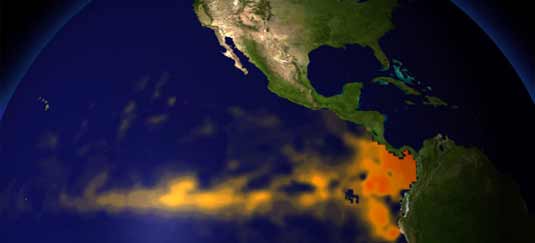Environmental Issues of the Galapagos
Of course, a world that has created itself in such a remote and isolated realm is a delicate system. Humans and other factors have interrupted this system drastically. The ecosystem in the Galapagos took millions of years to evolve in an intricate and unique way.
There are a plethora of environmental problems plaguing the islands, some stemming from the pressures of world climate changes such El Niño (ENSO), others arising from commercial fishing, and overpopulation, and many resulting from the introduction of species by humans dating back to the 1800's. Another big problem the Galapagos Islands had to face was a big oil spill in 2001.

El Niño:
The global weather anomaly hit the Galapagos hard. While an entirely natural occurrence, the weather pattern took a vital part of the ecosystem out of the chain. Many fish searched for different waters to feed upon. The fur seals were most greatly affected as they depend on the fish closer to the surface. The surface waters were heated more during the attacks of El Niño, and the fur seals between ages 1-4 were virtually all wiped out. El Niño also affected coastal birds. The absence of fish in the coastal waters meant that many of the traditional nest areas for birds were abandoned.


